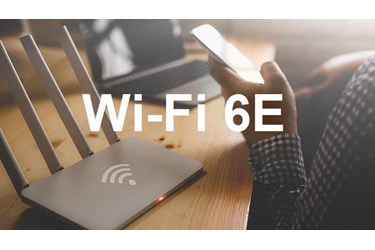UL offers first Wi-Fi 6E testing services in Europe

UL has announced that it has begun to offer Wi-Fi 6E testing capabilities to meet the regulatory requirements for US and Europe at multiple European sites
UL’s laboratories in Basingstoke, England, and Stuttgart, Germany, will be the first and only Wi-Fi 6E testing facilities in Europe and will look to address the immediate demand for Wi-Fi 6E wireless testing and certification services.
These facilities are able to offer start-ups, scaling businesses and large corporations state-of-the art technology and a comprehensive service solution, including certifications to meet market regulatory requirements around the world, supporting the introduction of Wi-Fi 6E-enabled products.
UL’s Wi-Fi 6E services, supported by the latest equipment and the bespoke software with increased automation, significantly reduces turnaround time and helps ensure consistency of testing and reporting across global laboratories.
“Balancing new Wi-Fi 6E technology innovation and speed-to-market with operational and product safety are crucial to customer success as they move to market this future-facing Wi-Fi upgrade,” said Maan Ghanma, smart solutions director for UL’s Consumer, Medical and Information Technology division. “This is why we have proactively addressed potential challenges facing wireless technology manufacturers and their suppliers and have increased Wi-Fi 6E investments to test a myriad of devices and equipment.”
Wi-Fi 6E is the next-generation wireless standard capable of operating in the 6GHz band at speeds up 9.6 Gbps. The “E” in Wi-Fi 6E stands for Extended, referring to the extended of the usable frequency range. Wi-Fi 5 uses frequencies in the 2.4 GHz and 5 GHz bands. Wi-Fi 6E is extended to the 6 GHz band. Whereas Wi-Fi 5 can reach a maximum throughput of 3.5 Gbps, Wi-Fi 6E can reach speeds up to 9.6 Gbps.
Wi-Fi 6E provides better performance in congested areas, from corporate offices to device-packed homes and with Wi-Fi 6E, a router will now be able to send signals on the 6GHz band in addition to the 2.4 and 5GHz bands currently utilized by Wi-Fi 5.
“Given growing Wi-Fi 6E demand and UL’s global presence with strategically located laboratories in the Asia, Europe and the Americas, we have the ability to support the launch of our customers’ Wi-Fi 6E products in their target markets globally, aided by the strength of our Global Market Access services that cover more than 190 countries,” Ghanma said.